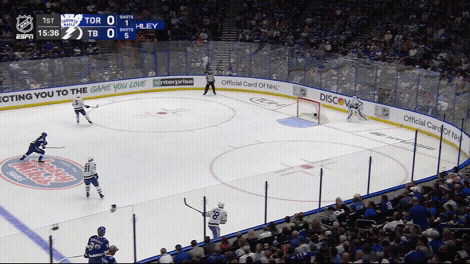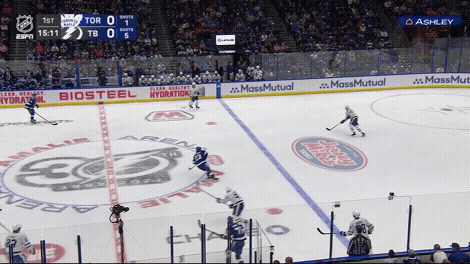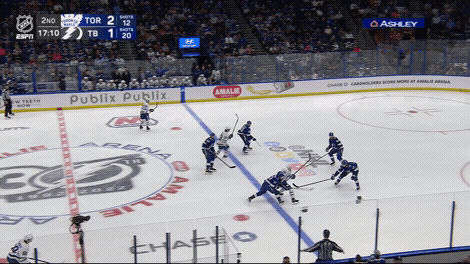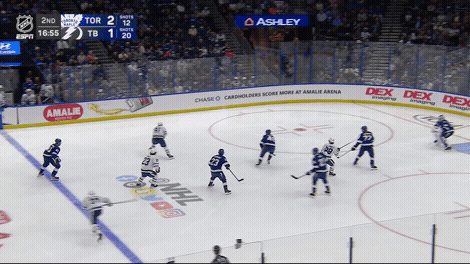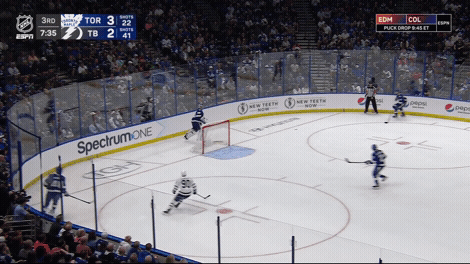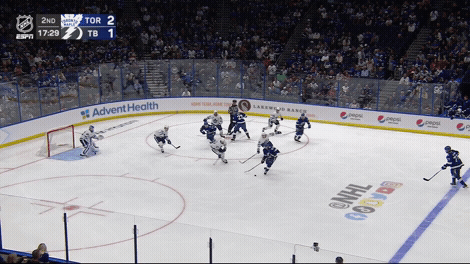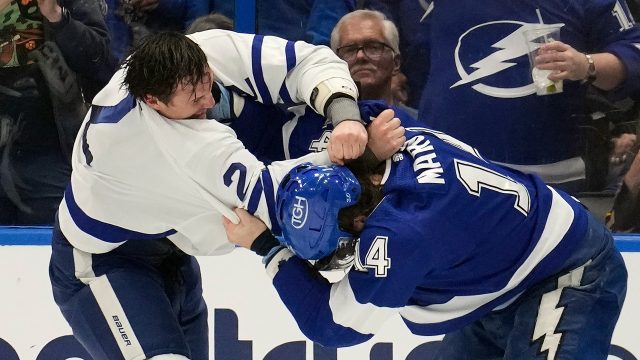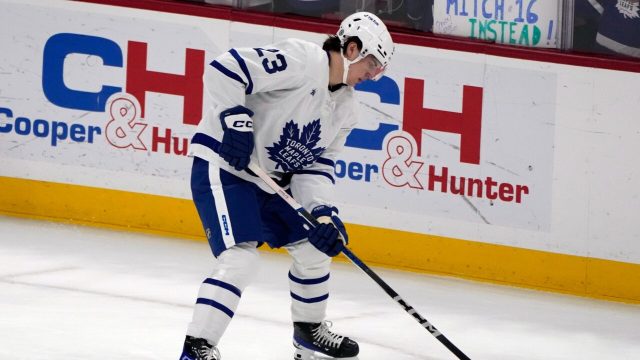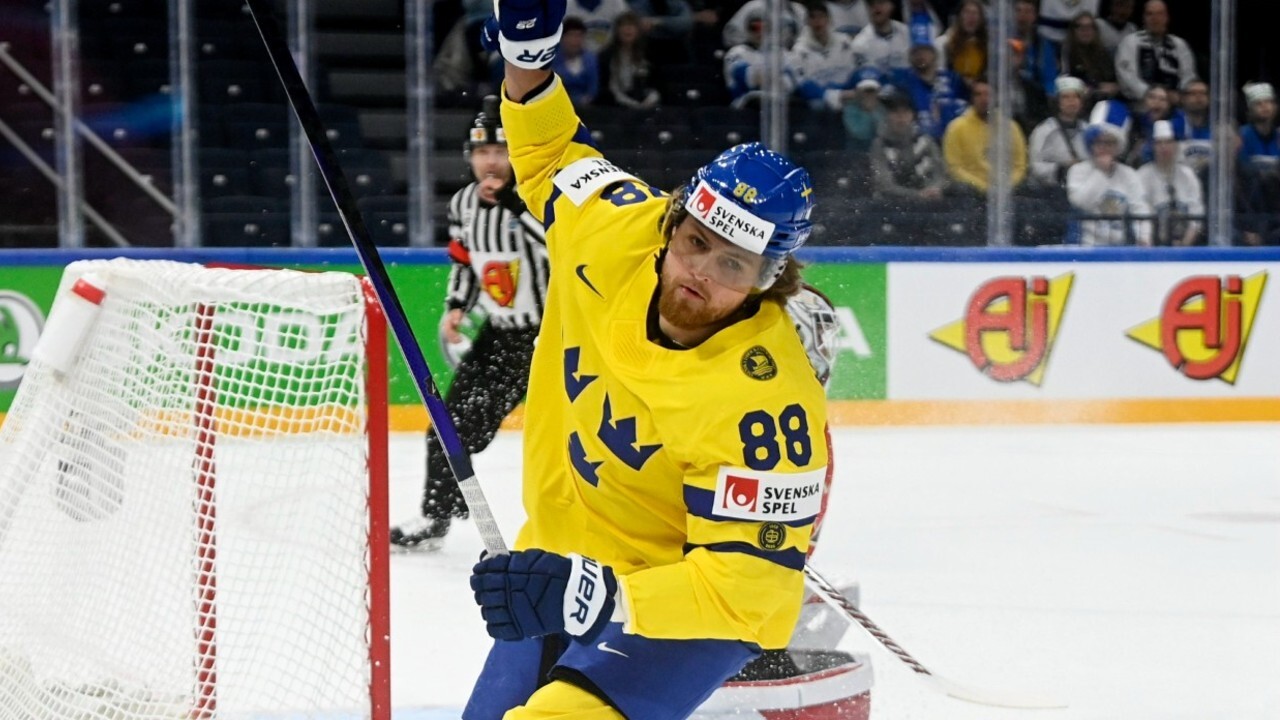
Conversations about the Leafs and the playoffs have become too emotional to be rational, but the reality is last season they built a team that wasn’t far from getting past the Eastern Conference champions.
It wasn’t 4D chess when the Lightning lost to Toronto three times in the 2022 playoffs, the Leafs were just a pretty good team. And so the question became: what could put them over the edge? The resounding answer was toughness and grit and all the intangible-type stuff, so they went out and acquired a boatload of it. That box seems to have been checked heading into this season’s playoffs.
The question they’re left with now, and the one that has my attention, is: will the Leafs dress a lineup that’s reactive to the past, or one that’s best built to beat Tampa Bay in the present?
If every time you lose you simply fix the problem that cost you the year before, you’ll always be a step behind. Based solely on evidence, the 2023 Toronto Maple Leafs seem to be a better hockey team than the 2023 Tampa Bay Lightning. They’re 13 points ahead in the standings, they’ve got a goal differential of plus-56 to Tampa Bay’s plus-24, and they’ve lost just twice in regulation in their last 10 while the Bolts have been below .500 since the start of February.
So I can understand the temptation to dress a lineup that doesn’t take any risks – just don’t make that glaring error and beat yourself, right? – and assume patching last year’s hole is enough to get you over the hump this year.
My fear with that strategy, as an avid Leafs watcher, would be that it just keeps games close and leaves more to chance, luck and the refs to provide those bits of randomness that may not necessarily fall in the Leafs’ favour (or if you’re a curse believer, won’t fall in the Leafs’ favour).
The Leafs have a very clear choice – or series of choices – on their hands. They can choose to dress a “built to go and take the win”-style lineup, or they can dress a more conservative “built to answer Tampa Bay’s strengths” group.
Call that a “play to win” vs. “play not to lose” conundrum if you like, where I feel similarly to Herm Edwards once upon a time: You play to win the game.
I’ve recently changed how I think Toronto should play this series, partly because of how Tampa Bay has looked. I’m becoming partial to thinking the Leafs might be better off taking some chances and seeing if the Bolts can keep enough pucks out of their net to win a higher event style game.
Below are what I see as three choices the Leafs have to make, and they’ll show us what Toronto intends this series to look like. Will they go and take it to Tampa, or will they be fine with a closer score where they just try not to beat themselves?
Matthew Knies or Zach Aston-Reese/Sam Lafferty?
This debate is a good problem to have, and knowing how the post-season usually goes it likely isn’t a question they’ll have to ask on too many nights given injuries. But it’s also a clear directional option, with Knies being the offensive-upside, chance-taking roster selection, while ZAR and Lafferty are the more reliable two-way players who won’t take big chances that could cost you (I’d prefer Lafferty to ZAR myself, but both have been great). They almost certainly wouldn’t provide what Knies would offensively, but they’re as low risk as depth guys come.
After watching Knies’ first game, I felt his risk-taking was the last thing the Leafs needed in the playoffs, as they’ve been burned by it before. After two games, though, I’m convinced his upside is so high that I now think you have to live with the trade-off and put him in. He’s just got too much pop to deny.
A few Knies GIFs here so I can show you what I see (I promise I won’t go this deep on each decision). We’ll start with a random shift of his I’ve chopped into two GIFs because it sums up my first impression of the player.
First, here’s a breakout where he’s so far ahead of the play that he has to turn behind him to face it. Not great.
But the second the puck doesn’t come to him, he smashes on the brakes. Great. (It’s a big plus for me that he’s a stop/start guy rather than a swooper.)
He then shows good puck skill, puck support and skating. Great.
Then he tries to go through Tampa Bay one-on-three and turns it over. Not great.
The whole while, though, he’s just bursting with energy against a Tampa team that’s pretty sleepy.
Same shift now, below. The puck goes deep, he hounds it, stops the breakout, and allows his team to come in to get the turnover. Great.
Then he pulls out and gets on the D-side of the play. Great.
But then he makes a cheeky back pass at the end of the shift that was a little too “cool” and risky, especially given that exact casual play burned him for a turnover against Florida the night before.
When the Leafs were excited about Nick Robertson, the question I asked was “What does he provide when he isn’t scoring?,” as not many players aside from the most elite can score enough to be one-dimensional. With Knies, it’s clear he can provide other value, including creating turnovers with a heavy stick and a good brain for sniffing out pucks.
Here he’s jumping the Tampa route, creates the turnover, then tries to do something cute too soon. But at least he gets in on it and stops the Lightning breakout again.
Below, when Tampa is about to break the puck out, Knies tracks and turns it back over. His energy is noticeable and his skill-set valuable enough that he’s going to make some plays out there, and make life challenging for the Lightning.
Remember I mentioned stops and starts? I love him on his first NHL point, retreating in a defensive posture, stopping immediately on the turnover, and beating a Bolts player back to the net to get off a prime shot.
He’s too involved, too fast-twitch to believe he wouldn’t create something against the Lightning in playoffs.
That said, this is just a random example. The risk is that he’s always thinking about going up-ice. Here, with the puck in doubt and Steven Stamkos just off Knies’ shoulder, he doesn’t lock on to the sniper. He starts looking towards breaking it out, gets ahead of things, and the puck stays in the zone. If this puck pops into the slot, you want to be erring on the side of coverage until you know your guys have it.
In a nutshell, this is the debate for the Leafs: do you want a dynamic young player who can do unique things, but who may cost you defensively until he gets his head around the NHL game? Or do you believe you have enough offence in other players, and you’d just rather play guys who are going to help keep it out of your net?
Luke Schenn vs. Timothy Liljegren
No Leafs fan will tell you that they didn’t enjoy Schenn’s performance Tuesday night, where he manhandled Tampa Bay’s biggest, most physical, and verbally relentless player in Patrick Maroon. He simply collared the big dog, laid him on the ice, and said that’s enough of that.
But the reality is Schenn doesn’t skate like Liljegren, doesn’t move the puck as well, and the Leafs have to defend more when Schenn’s out there. He defends well in-zone, so there’s that, and he obviously provides something the team has sorely lacked in the past: push back from a player who plays legit minutes.
So how important is this debate about physical play and tone-setting and all that going to be? Should the Leafs play Liljegren, break more pucks out, and take it to Tampa that way? Or do they want to ensure they can stand up to a Tampa Bay team that leads playoff teams in PIMs by miles?
Loading up the talent vs. spreading it around
Should Ryan O’Reilly centre a stacked second line with John Tavares at wing, or do they want to ensure they’re “good” on every line they roll out by making him the third line centre?
Tampa Bay has some elite players, obviously, but the Leafs have a group of five forwards few teams can match. If they spread them out, you can expect them to at least play every line to a 50/50 draw. But if they want to load up their top six, they could force Tampa Bay to change how they deploy their defenders. Right now Victor Hedman, Mikhail Sergachev, and Erik Cernak anchor three pairs. If the Leafs load up, one of Nick Perbix, Darren Raddysh or Ian Cole should be on the ice (which should eventually yield something), unless the Bolts want to have two of those three guys form a third pair, in which case the Leafs’ bottom six should get some chances. Loading up forces Tampa’s hand.
There’s a conservative way to go with spreading out, and an aggressive way with loading up.
This question lies at the heart of the decisions Kyle Dubas and Sheldon Keefe have in the six days ahead: Are Tampa’s troubles not as legitimate as they seem, which could leave a more aggressive lineup vulnerable? Or are they legitimately struggling, in which case you’d want to go right at them rather than be content keeping things closer?
The answers are never simple, but I know mine. I’ve got Knies in the lineup on the third line, with ZAR coming out to start. I’ve got Schenn in for at least Game 1, as the “tone-setting” takes place, but I’d be quick to bring Liljegren in. And I’d load up that first game given you’ve got the line change advantage, then considering spreading it out in Tampa Bay.
But the options are there to go all in, or back things off. How Dubas and Keefe feel about what both teams truly are should show up in the way they put together their lineup for Game 1.



